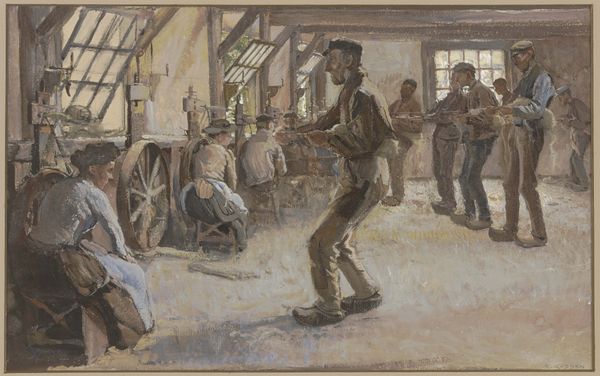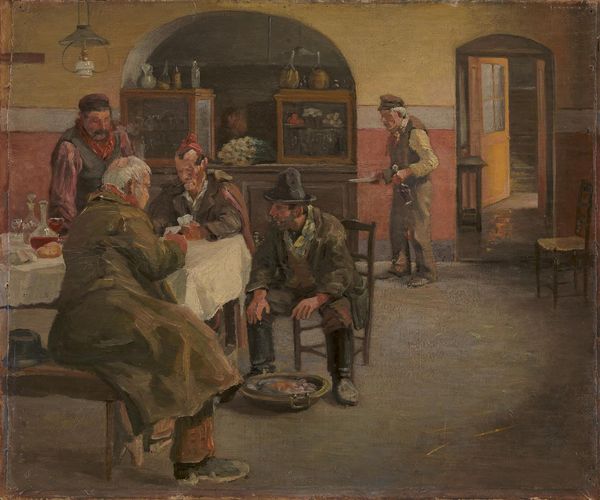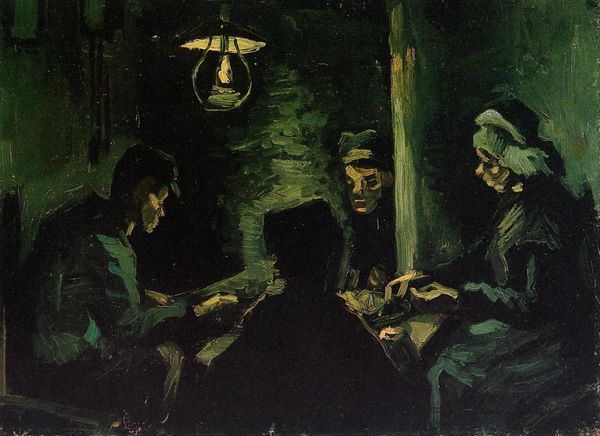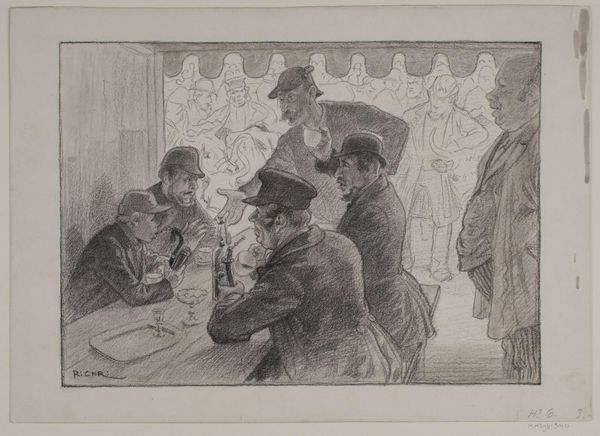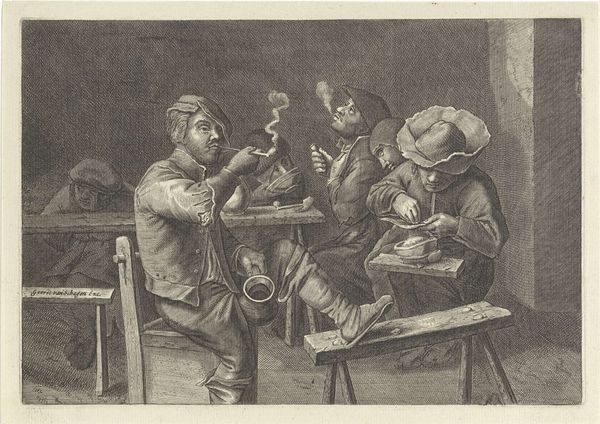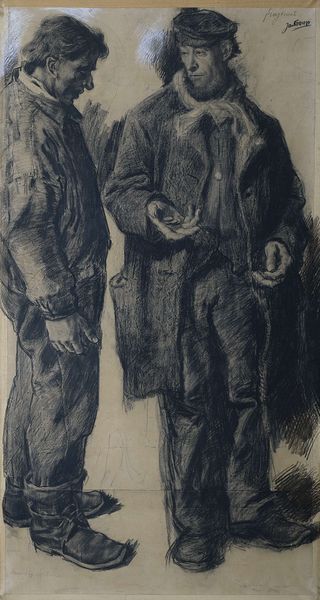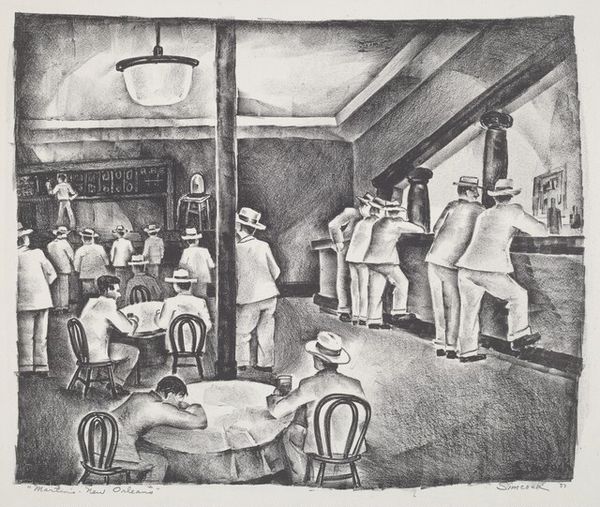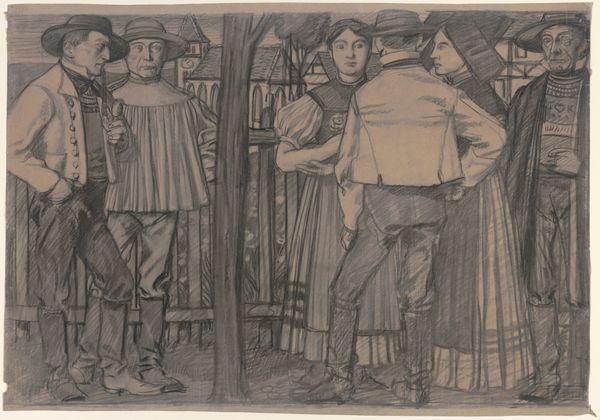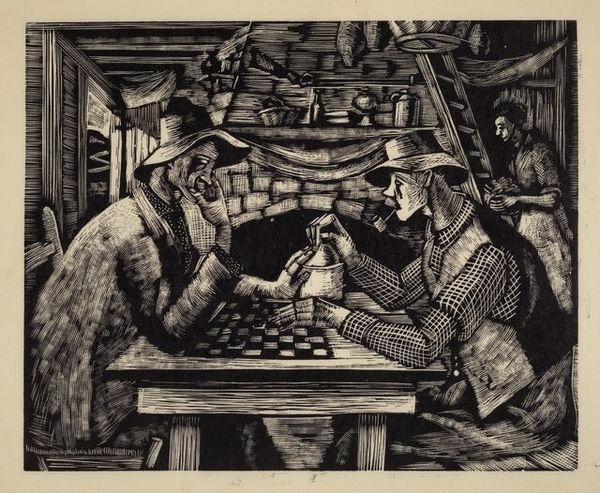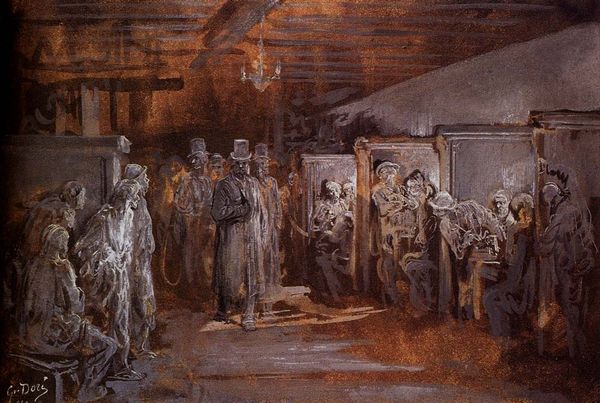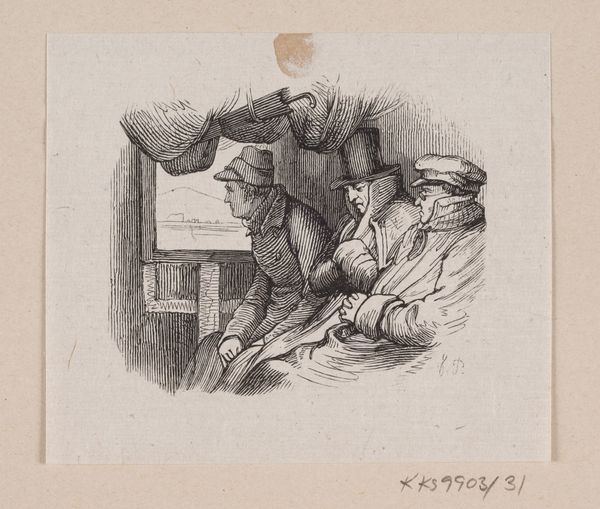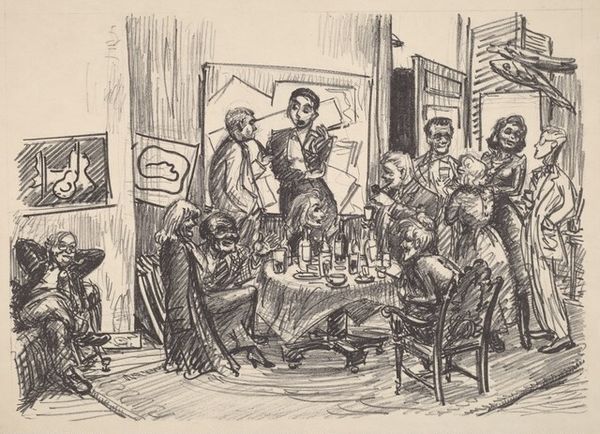
Copyright: Public domain US
Curator: Welcome. Before us is Camil Ressu’s watercolor, “After Work,” created in 1913. Editor: Immediately, the painting strikes me with its somber mood. The muted palette of browns and blues creates a heavy, almost melancholic atmosphere, despite the seemingly relaxed scene. Curator: Ressu's technique emphasizes planar construction and a reductive simplification of forms. The figures are blocky and solid, possessing weight without internal detail, existing largely as pure color and shape within the compositional space. Editor: It’s the very archetypal image of weary men at rest. They gather, but their eyes suggest deeper stories— perhaps the burden of their labor and simpler existences is too big of a pressure. Their hats function as symbolic protectors or markers of the labor class of that era. Curator: Yes, note the strong horizontality and verticality structuring the space, anchored by the angles and gestures. The use of shadow emphasizes their grounded nature; and the subtle variation within the restricted palette enhances a sense of depth and form through contrast and hue differences. Editor: Water, tables and beer steins are age-old visual symbols here—elements in which folks gather to drown sorrows, to build communities, and to take a momentary escape from harsh conditions. Curator: Intriguingly, despite the seeming lack of technical sophistication in representation, Ressu very rigorously calibrates each of his color modulations with its local effect on overall compositional balance and visual experience. Editor: It echoes similar imagery of working class life and community across diverse cultures and continents—perhaps a subconscious connection resonates from collective memories. "After Work", indeed: the symbolic heart of people in shared suffering and companionship. Curator: So, one appreciates Ressu's deft modulation and deployment of what otherwise is limited by his chosen genre conventions; it seems he knew that reduction would be his avenue to compositional integration and effect. Editor: As we turn to consider other pieces here, it seems our stroll in looking back at "After Work" will leave one considering enduring connections between communities, stories and spirits throughout our present moment.
Comments
No comments
Be the first to comment and join the conversation on the ultimate creative platform.

